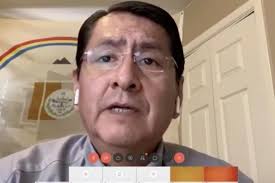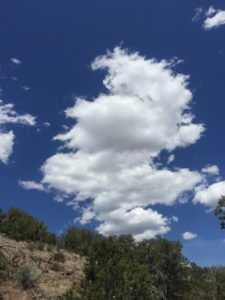 I was going to write a post that was amusing with a little bit of a lesson at the end. I would start with the observation that for me these days dressing for success only applies
I was going to write a post that was amusing with a little bit of a lesson at the end. I would start with the observation that for me these days dressing for success only applies to the waist up, as all my work is done via zoom. Just the other day, I facilitated a zoom meeting of 30 people. I wore a black knit top, floral silk scarf, silver earrings, hair in a French roll….and sweatpants. A couple of weeks ago I was interviewed for a new project online – crisp white blouse, light blue sweater, turquoise earrings, hair pulled back with two combs….and… you don’t need to know. It reminds me of those flip books I had as a child, where the pages are divided in threes – top, middle and bottom – with an animal on each page. When you move the pages you may end up with a monkey head on a giraffe body and platypus feet. Or maybe each page was a different worker, and you could flip to an astronaut head, a ballerina body and lumberjack boots.
to the waist up, as all my work is done via zoom. Just the other day, I facilitated a zoom meeting of 30 people. I wore a black knit top, floral silk scarf, silver earrings, hair in a French roll….and sweatpants. A couple of weeks ago I was interviewed for a new project online – crisp white blouse, light blue sweater, turquoise earrings, hair pulled back with two combs….and… you don’t need to know. It reminds me of those flip books I had as a child, where the pages are divided in threes – top, middle and bottom – with an animal on each page. When you move the pages you may end up with a monkey head on a giraffe body and platypus feet. Or maybe each page was a different worker, and you could flip to an astronaut head, a ballerina body and lumberjack boots.
I would then recall my early professional days and my struggle to look like a mediator, having no idea what that meant, but feeling sure that I needed to look different. Into the depths of this insecurity walked Merle Lefkoff, a seasoned and highly successful mediator who had just moved to Santa Fe from the Carter Center where she had been doing important international work. We had a coffee date. She was tall and blond and wore a snappy businesslike outfit — trim, charcoal gray skirt, matching jacket, white silk blouse, smart scarf, simple gold bracelet and heels. She carried a stylish brief case. I would remember how I studied her carefully, how she opened her tool box of fancy techniques and how I gobbled them up.
I would confess that I ran out and bought a Merle Lefkoff outfit and briefcase. I couldn’t do anything to make myself tall and blond….but I hoped that wasn’t critical. I strode into my next meeting channeling Merle. I pulled out of Merle’s tool box a technique that I didn’t quite understand, but I was confident in my new Merle-ness. Although things weren’t going that well, I stuck with the Merle program, sure it was the answer. Until finally it dawned on me…I was not and never would be Merle Lefkoff.
Here I would deliver the punch line: I came to see that all I had to offer those in conflict was myself — inside and out — my compassion, my vulnerability, my honesty, my sense of humor, and yes, this body and this wardrobe. The work we do is above all personal. Parties want a mediator who is a genuine person, someone who knows herself, someone they can trust. They want authenticity. And I would conclude that since then my practice has become incredibly simple.
That was my plan for this month’s post. I would have titled it “Dressing for Success.” Pretty nifty, huh?
I was actually on my way to my computer to write it when I saw a headline from the NY Times on my smart phone: “The Top U.S. Coronavirus Hot Spots Are All Indian Lands,”( NYT, 5/30/2020).

 I sat down and read it. If Indian nations were states, the top five in positive cases per population would be Indian states. New York would be number 6. There has been a lot of coverage lately of this crime – the condition of Indian country — which is a result of decades and decades of abuse, neglect and disrespect. How else would one-third of Navajos have no running water, no electricity and limited broadband, not to mention unemployment nearing 40% and alcoholism and suicide rates many times the national average? These statistics are better for some tribes and worse for others. I am glad that those around the country are beginning to understand what has been painfully clear to those of us living in, or working with, tribal communities. Jonathan Nez, Navajo Nation President, has appeared on national news programs, including Amanpour, eloquently describing the challenges facing his people, while emphasizing their strength, ingenuity and resilience. Their current plight is not of their making. The pandemic has shone the spotlight on a shameful inequity in this country. I desperately hope that this awareness will lead to reforms and new opportunities for all Indian people. Let’s not go back to normal on this one.
I sat down and read it. If Indian nations were states, the top five in positive cases per population would be Indian states. New York would be number 6. There has been a lot of coverage lately of this crime – the condition of Indian country — which is a result of decades and decades of abuse, neglect and disrespect. How else would one-third of Navajos have no running water, no electricity and limited broadband, not to mention unemployment nearing 40% and alcoholism and suicide rates many times the national average? These statistics are better for some tribes and worse for others. I am glad that those around the country are beginning to understand what has been painfully clear to those of us living in, or working with, tribal communities. Jonathan Nez, Navajo Nation President, has appeared on national news programs, including Amanpour, eloquently describing the challenges facing his people, while emphasizing their strength, ingenuity and resilience. Their current plight is not of their making. The pandemic has shone the spotlight on a shameful inequity in this country. I desperately hope that this awareness will lead to reforms and new opportunities for all Indian people. Let’s not go back to normal on this one.
So, here is my concluding insight for this post: This is what it’s like these days. I am amused by my new work life, I am reminded of a significant memory from long ago, and I am hit with the ugly truth that the pandemic reveals. And it’s not even noon. I will go through this cycle countless times before bedtime, and even into my dream life. That’s what it’s like these days.
A footnote. After I wrote this post the country exploded in grief and outrage, expressed peacefully and destructively, over the death of George Floyd. Hopefully this is a step to a more just society. The future is uncertain and this, too, is a big part of how it is these days.


A situation we can all relate to. except for the suffering being experienced by the tribal nations. Where do we start to afford others, blacks, latinos, native Americans, the opportunities we take for granted? Handouts and welfare certainly isn’t the answer. In addition to correcting the mistakes, misunderstandings, and wrongs of past generations (and this one as well), we need to auger down to the root causes and work on those.
Good points, Larry. I agree that we need to dig deep on all sides and listen to each other. We also need to take action, show a commitment to change with concrete actions at all levels, from our neighborhood to congress and everything in between.
When I think of racism in this country, and the current marches and riots, I think it’s long past time that we somehow begin to heal these wounds. This includes the trauma that we have inflicted in Native peoples. It’s time for a serious conversation about reparations for Native people and for African Americans. I have no idea what those reparations would look like, but a lot of people have given this idea a lot of thought. The sticking point is that I think we white (liberal) people are so afraid (here comes our hidden racism) that our resources will be depleted by reparations that we don’t want to start the discussion. One thing that we have learned through this pandemic is that we can and will spend trillions of dollars to stave off a pandemic. Most economists believe that the country will recover, and sooner rather than later. We can and should spend whatever it takes to begin to heal our racial wounds. When we take those steps, our country will be richer, not poorer; healthier, not sicker; stronger, not weaker; more just and less unjust. Poor white people, and Hispanics and the marginalized and working poor will all be better off in a more just society. It will not diminish us to provide the tools – money, education, healthcare, decent wages and whatever else – so that others can lift themselves up. Let’s push Joe Biden to be the President who starts the conversation on reparations, and let’s be the citizens who support his efforts.
Kay, you are eloquent, and I can tell that you have given this a lot of thought. You’re right about the fear embedded in the topic of reparations. It feels huge and unmanageable…but the cost of not tackling it is great, and greater by the day. I don’t know how to build broad, diverse support for the concept…or maybe it can be done without that? All I know is that I wish you were writing speeches for Biden!
Beautifully and thoughtfully written Lucy. I think you suit the real you- somehow I am struggling to see you as a Merle lookalike ! That’s worked just fine. Since boyhood and throughout my career I have always lived close to indigenous reality. What is happening in these difficult times is very disturbing. By and large , Canadian First Nations, no less vulnerable in many parts of the country seem to have been managing better most having isolated their communities early. Stay strong dressed to “ Lucy nine’s” from the waste up.
http://Www.vikingsonaprairieocean.com
Thanks so much, Glenn! What a wonderful message. Always good to hear from you, especially glad you don’t think I need to look like Merle! One thing I’m noticing about being in touch with Navajos is how they are taking care of each other. An elderly friend in one community is gathering supplies (including the masks we are making) and driving all over the reservation to deliver to, as she says, “those little old Navajo ladies who are out in middle of nowhere and not getting help.” Her daughter works at the Indian hospital, her sister is making masks in Phoenix, her nephews are shopping, everyone pitches in.